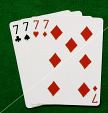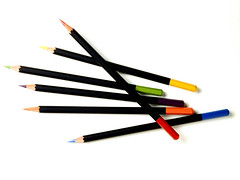Quiz on good starting hands in Omaha hi poker. The 1st Part
In all starting hands given at the end of this chapter assume that you are to act first after the flop in limit Omaha hi poker for nine people and decide what you are going to do: raise, call or fold before you read the answers. Though there is some difference in evaluating hands in a limit game and a pot-limit game, in this situation assume you play with pot limit if there aren’t additional instructions.
After each starting hand the probability of winning a pot in Omaha hi poker is given in percents on condition that all players stay in the game till the end of a deal. These percents are calculated on the computer program Poker Engine for 1000 deals. The program was written by famous Californian poker expert Mike Caro in the eighties, and the numbers were run by his assistant Mason Malmut. Great appreciation to those two gentlemen.
In future more and more poker theories will be calculated by means of computers. Computer data become even more useful if remember about their weak points and use these data with utmost care. Here are some moments when laboratory data may differ from real game.
Weak points of computer diagnostic of starting hands in Omaha hi poker
1) In this research computer plays every pot so that players call the pot until an end. In the real life more than a half players will fold in preflop and flop. Nowadays more refined programs simulate streets and players decide whether they should call, raise or fold. Such scenario is more realistic and may be more relied upon.
 2) In the real life a player see three of five flop cards for less money than the rest two – fourth and fifth. To buy a good card is of prime importance.
2) In the real life a player see three of five flop cards for less money than the rest two – fourth and fifth. To buy a good card is of prime importance.
3) The number of wined pots is not so important as the amount of wined money what is exactly the aim of the game. That’s why a hand which can get good supplement or will be folded is considered better comparing with a hand which has chances to stay competitive after flop but has little advantages even after a supplement. Specifically a high pair makes a good hand if one can see the flop cheap – you either get a three-of-a-kind or leave. On the other hand a flush draw from a queen, though being potentially competitive, has smaller chances for success than a three-of-a-kind.
For continuation see the second part

